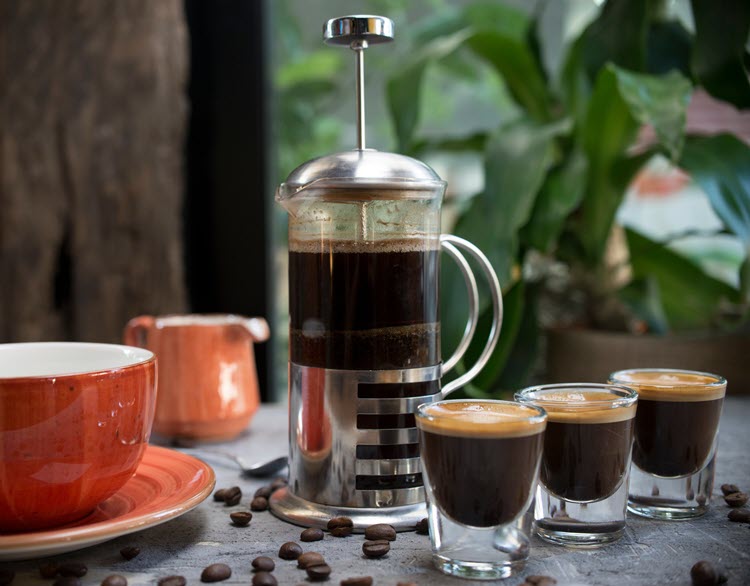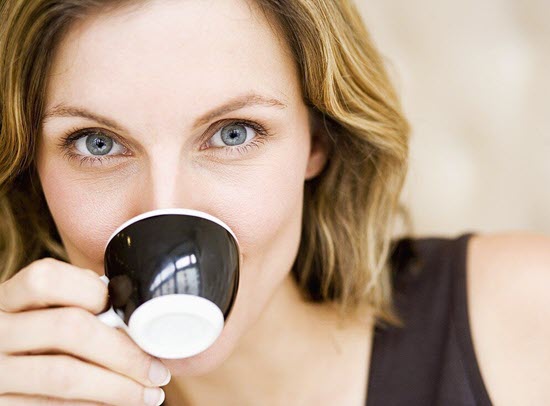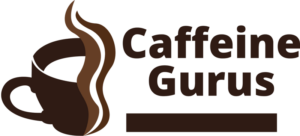Espresso is a concentrated coffee drink with a bold, full-bodied flavor. Water is pumped through the finely ground coffee beans at a high pressure to extract the flavor quickly and efficiently. Because the grounds-to-water ratio is lower, usually 1:2, it produces robust coffee with a dense foam on top.
Espresso is brewed in 1-to-2-ounce servings, as opposed to the traditional 8-ounce serving of coffee. Espresso can be consumed straight from the espresso machine or used to make a variety of beverages, like lattes, cappuccinos, and even martinis, explains Kitchen Aid.
But many wonder: how much caffeine is there in 3 shots of espresso?
The answer: Three shots of espresso have about 194 milligrams of caffeine.
While espresso does contain a higher amount of caffeine per ounce than traditional coffees, the serving size is much smaller.
It may surprise you to learn that one serving of espresso actually contains less caffeine than a cup of coffee.
In This Article
How Much Caffeine is in 3 Shots of Espresso?
Espresso shots are typically referred to are single or double. A traditional single shot of espresso is 1 ounce, while a double shot is 2 ounces, but be aware that this can vary depending on where you purchase your espresso shots.
Each ounce of regular espresso contains approximately 64.5 mg of caffeine, while a 1-ounce shot of blonde espresso contains about 85 mg of caffeine. Three single shots of regular espresso contain around 194 mg of caffeine, while three single shots of blonde espresso are even stronger, containing about 250 mg of caffeine.
Caffeine Content Chart:
- 8 oz Cup of Coffee: 96 milligrams
- 1 oz Cup of Espresso: 64.5 milligrams
- 8 oz Cup of Black Tea: 47 milligrams
- 8 oz Cup of Green Tea: 28 milligrams
- 8 oz Cup of Cola: 22 milligrams
- 8 oz Cup of Energy Drink: 71.9 milligrams
If you are drinking double shots of espresso, double the amount of caffeine for three shots. For example, three double shots of regular espresso would contain about 400 mg of caffeine, while three double shots of blonde espresso would contain approximately 500 mg of caffeine.
Always check to make sure if your coffee shop is referring to one or two-ounce shots when ordering or consuming espresso, especially if you are concerned about the amount of caffeine you are consuming.
Is 3 Shots of Espresso a Lot of Caffeine?
Three single shots of regular espresso contain about 200 mg of caffeine or roughly the same amount of caffeine as two 8-ounce servings of coffee. Blonde espresso has about 250 mg of caffeine, equivalent to two and a half cups of coffee.
If you are unaccustomed to drinking caffeine, three shots of espresso at once may cause jitters and other side effects. However, moderate to heavy coffee drinkers aren’t likely to experience issues with three shots of espresso — as long as they don’t consume other foods with caffeine in them, too.
Is 3 Shots of Espresso Too Much Each Day?
Three single shots of espresso do not exceed the amount of caffeine healthy adults can consume safely in a day. According to the Harvard School of Public Health, healthy adults can safely consume 400 mg of caffeine a day.
Keep in mind that if you consume three single shots of espresso, you actually consume less than the maximum amount of caffeine you can safely consume in a day. However, if you consume three double shots of espresso, you will have reached the limit of the recommended amount of caffeine you should drink in a day.
How Long Do 3 Shots of Espresso Stay in Your System?
Espresso is fast acting and begins to show results (namely increased wakefulness and alertness) in about 15 minutes. Because an espresso shot is typically downed quickly, you will likely notice a rush from the caffeine quickly, too.
The caffeine in both an espresso shot and a cup of coffee begins to work in about 15 minutes. Sipping a leisurely cup of coffee spreads the caffeine rush out over half an hour or more, while the caffeine in an espresso shot enters the bloodstream all at once, giving you a quicker caffeine rush.
However, that doesn’t mean the caffeine from the espresso will leave your body any faster than the caffeine from a cup of coffee. According to Insider, caffeine can take up to 10 hours to leave your system.
If you are new to drinking espresso, it is wise to begin with one shot to determine how your body will respond to the concentrated source of caffeine, as once the caffeine is in your system, there is little you can do to get rid of it. However, exercising and staying hydrated may lessen symptoms of jitteriness, anxiety, dizziness, headaches, and racing heartbeat, if you accidentally consume too much caffeine.
If you are sensitive to caffeine, it is recommended that you do not drink any caffeine for six hours before bedtime, or it may interfere with your sleep.
Frequently Asked Questions
Coffee beans are low in calories. So low that one 1-ounce shot of espresso contains a mere 2 to 3 calories, meaning three shots of espresso have 6 to 9 calories.
However, when espresso is used in other drinks, like lattes and cappuccino, you will need to calculate the number of calories in the milk, cream, and sweeteners.
Coffee has been shown to offer various health benefits, from feeling better to helping fight inflammation. According to AARP, these are some of the amazing health benefits of drinking coffee (or Espresso)
- Lowers the risk of type 2 diabetes.
- Boosts brain health.
- Reduces the risk of heart failure.
- Lowers the risk of strokes.
- Improves heart health.
- Increases brain health.
- Reduces memory loss.
- Improves mood.
- Lowers your risks of depression.
- May lengthen lifespan.
Several factors influence the amount of caffeine in a shot of espresso, from the variety of beans and where they were grown to how the beans are roasted.
A shot of traditional medium or dark roast espresso contains about 64.5 mg of caffeine, while a shot of blonde espresso contains a bit more at 85 mg per shot. Doing the math, 4 shots of espresso contain 258 mg of caffeine. If you really want a pick-me-up, Vietnamese coffee has twice as much caffeine! In comparison, an 8-ounce cup of regular coffee contains about 95 mg of caffeine.
Espresso is a concentrated coffee. Its flavor is stronger and more flavorful because it is made with less water than regular coffee. It is also ‘brewed’ at a high pressure.
But remember, a stronger flavor doesn’t mean the shot of espresso has more caffeine than a cup of coffee. In fact, a shot of espresso has less caffeine than a cup of coffee.
It may, however, feel like it has more caffeine because it is typically downed quickly and enters the bloodstream all at once.
Ounce per ounce, espresso contains more caffeine than coffee because espresso is made with less water and is highly concentrated.
However, to make an accurate comparison, the serving size of each must be considered. A one-ounce shot of espresso contains less caffeine than an 8-ounce cup of coffee.
Traditional espresso has about 65 mg of caffeine in a one-ounce serving, while coffee has about 95 mg of caffeine in an eight-ounce cup.
It is easy to assume that the darkest espresso contains the highest amount of caffeine, but this isn’t so. Blonde espresso made with light roast beans actually has slightly more caffeine than medium or dark roast espresso.
The caffeine content of coffee beans depends on several factors, from the specific region where the beans are grown and the variety of coffee beans to how the beans are roasted. The caffeine content of espresso and coffee is an estimate of the amount of caffeine from coffee beans.
While you may not always know the exact amount of naturally occurring caffeine in the coffee beans used, you can use the roasting method as a guide to whether the coffee used to brew your espresso is likely to be higher or lower.
Light roasted beans are roasted at a low temperature for a shorter time and retain more moisture. This means that when they are ground, the coffee is dense and has more caffeine per volume.
Dark-roasted coffee is roasted at a high temperature for a longer time and loses much of its moisture. When these beans are ground, the coffee is lighter and fluffier and has less caffeine per volume.
The danger of drinking too much espresso lies in consuming too much caffeine. While moderate amounts of caffeine (up to 400 mg a day) are known to provide a host of health benefits, consuming too much caffeine can be detrimental to your health and well-being.
According to Mayo Clinic, consuming too much caffeine can cause a host of unpleasant symptoms, such as:
- Dehydration
- Insomnia
- Shakiness or the jitters
- Dizziness
- Headaches
- Rapid heart rate
- Anxiety
- Irritability
- Nervousness
- Muscle tremors
Espresso can last up to four hours when stored in an airtight container at room temperature. After this time it will start to lose flavor and aroma, so it’s best to drink it within 4 hours. For the ultimate in freshness, drink it right away!


